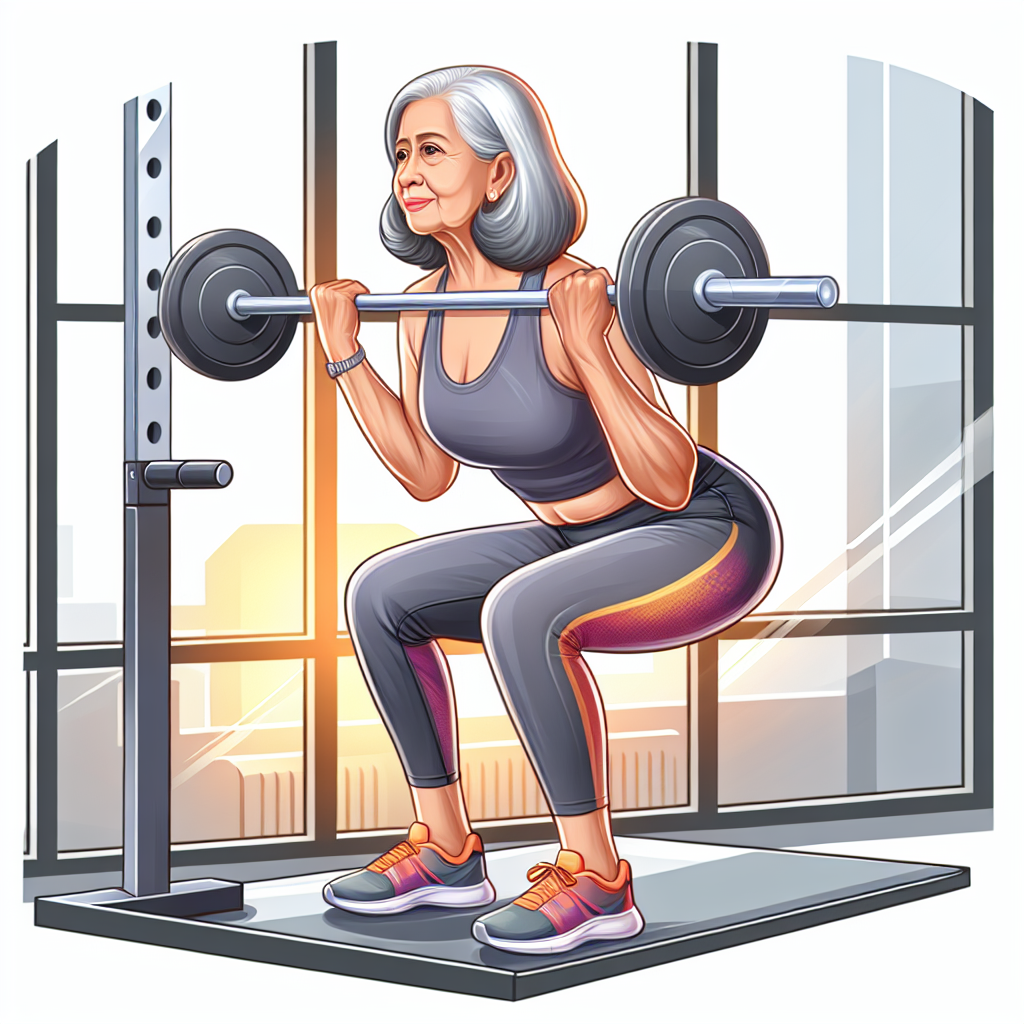The Guide on How to Build Muscle Mass After 60
Embracing fitness, specifically building muscle mass after 60, isn’t just about looking good – it’s about taking control of your health and wellbeing. Almost as straightforward as when you were in your twenties, this guide navigates through the complexities to show you that age is indeed just a number when it comes to fitness. Here’s the road map to reclaiming a robust and vigorous physique that shifts the narrative from the inevitable frailty of aging to a vibrant lifestyle. It explains not just the “how,” but also answers common FAQs and breaks down the process into understandable chunks. So gear up as you embark on this illuminating journey towards building muscle mass post 60.
Understanding the Challenges of Gaining Muscle Mass After 60
Bodybuilding or gaining muscle mass after 60 presents its unique set of challenges, largely due to aging. However, these challenges aren’t impossible to overcome. Understanding them is the first step towards devising an effective muscle-building plan.
Physiological Changes with Age
As you age, your body undergoes numerous physiological changes that may form a hurdle in your quest to build muscle. Loss of muscle mass and strength, also known as sarcopenia, is inevitable in aging. Hormonal changes, imbalances, or a decrease in testosterone production – instrumental in muscle growth and strength – could affect muscle-building capabilities further.
Potential Health Issues
Certain age-related health issues may affect your ability to gain muscle mass post-60. For instance, heart diseases or joint disorders may limit your ability to engage in intense workouts. Conditions like osteoporosis can increase injury risks, and digestive issues might interfere with optimal nutrient absorption. Always remember to heed any medical advice given by healthcare professionals.
Mental Barriers and Motivational Challenges
Mental hurdles often prove as difficult to surmount as physiological ones. It could be hard to maintain motivation or develop a consistent workout routine. Fears regarding injury, or feeling out of place among younger gym-goers could also deter your muscle-building journey.
Safety Precautions Before Starting Muscle-building Exercises
Before adopting any fitness program, especially at a later age, safety precautions are of paramount importance.
Importance of Medical Clearance
Above all, securing medical clearance before starting any muscle-building regimen is vital. Your medical provider will assess your health status, identify potential risks and suggest modifications beneficial for your workouts.
Recognizing Your Body Limits
It’s essential to understand that your body at 60 may not function the same way it did in your 20s or 30s. Pushing too hard or too fast can lead to injuries. Start slow, gradually building your momentum, and listen to your body as you grow stronger and more capable.
Continuous Monitoring of Your Body Response
Monitor your body’s response regularly to each workout regime. Note muscle fatigue, excessive soreness, or prolonged recovery times, and adjust your workout plan accordingly to avoid strain or injuries.

Implementing a Nutritional Plan
A well-planned nutritional approach is integral to your muscle-building efforts.
Role of Proteins in Muscle Building
Protein is the key component in building muscle mass. Incorporating enough protein into your diet is crucial as it aids in muscle recovery and growth post-workout. Include lean meats, dairy, eggs, or plant-based protein sources in your meals.
Importance of Balanced Diet
While protein is vital, maintaining a balanced diet of carbohydrates, fats, vitamins, and minerals will ensure overall health and fuel your workouts efficiently.
Hydration and its Impact on Muscle Growth
Staying hydrated pre, during, and post workouts is critical. Hydration aids in maintaining blood volume, regulating body temperature, and facilitating muscle contraction processes, all of which are essential for muscle growth and function.
Role of Supplements in Muscle Building
Supplements can complement your diet and contribute to muscle gains by augmenting nutrient intake, promoting recovery and performance.
Importance of Supplements
An adequate diet may sometimes fall short of providing necessary nutrients. Supplements like protein powders or creatine can help fill nutrient gaps, enhance muscle recovery, and boost athletic performance.
Choosing the Right Supplements
Navigating the supplement market can be daunting. Opt for reputable brands that are transparent about their ingredients and supported by scientific evidence. It can be beneficial to consult with a healthcare professional for personalized supplement advice.
Possible Risks and Side Effects of Supplements
While useful, certain supplements might cause side effects or interact with medications. Excessive protein intake can strain your kidneys, and creatine could potentially lead to muscle cramps or digestive issues.

Designing an Effective Training Routine
An effective training routine plays a major role in your muscle-building plans.
Choosing Suitable Exercises
Weight-bearing exercises like squats, deadlifts, and push-ups can be great for muscle-building purposes. However, choose exercises that suit your fitness level and health conditions, gradually advancing them as your stamina improves.
Importance of Weight Training
Weight training is essential for muscle building. It triggers muscle protein synthesis and stimulates muscle growth. Start with lighter weights, gradually increasing them as you become stronger.
Structuring the Routine for Optimal Results
Structure your training routine for optimal muscle-building results. Include sets, repetitions, and rest intervals adapted to your needs, and rotate between different exercises and muscle groups for a comprehensive workout.
Importance of Rest and Recovery
Never underestimate the significant role of rest and recovery in the muscle-building process.
Significance of Sleep in Muscle Recovery
Sleep is vital for muscle recovery and growth. It’s during sleep that our bodies repair the damaged muscle tissues and facilitate muscle protein synthesis.
Role of Active Rest Days
Active rest days, engaging in light activities like walking or stretching, can aid in muscle recovery, reduce muscle soreness, and increase mobility.
Listening to Your Body to Avoid Overtraining
Listen to your body signs to avoid overtraining. Prolonged fatigue, lack of progress, or persistent muscle soreness might indicate that your body needs more rest and recovery.

Tracking Your Progress and Adjusting Your Plan
Regularly monitoring your progress and adjusting your plans accordingly will ensure continual improvement and success.
Methods for Measuring Progress
Various methods can be employed to track progress, like body measurements, weights records, or progress pictures. These will help you maintain motivation and identify areas that need adjustment.
Adjusting Your Training Routine
Over time, you might need to increase weights, change exercises, or modify the intensity of your workouts to continue challenging your muscles and promoting growth.
Fine-tuning Your Diet
You might need to adjust your nutrition according to your body needs, progress, or plateau. This could mean increasing protein intake, adjusting caloric intake, or experimenting with nutrient timing.
Common FAQs About Building Muscle Mass After 60
Is it Possible to Gain Muscle Mass After 60?
Yes, it’s entirely possible to build muscle mass even after 60. While it may present more challenges due to aging, with the right training routine, nutrition, and mindset, you can definitely make fitness gains.
What are the Best Exercises for Older Adults?
The best exercises strongly depend on individual fitness and health status. However, a combination of weight-bearing and resistance training exercises could prove beneficial for muscle-building initiatives.
How Much Exercise is Safe for a 60-year Old?
The amount and intensity of exercise would ideally be personalized according to individual health status, physical abilities, and fitness goals. Generally, moderation is key, and progressively increasing the intensity of exercises as fitness improves is advisable.

Beneficial Lifestyle Habits
Maintaining an active lifestyle and cultivating good habits are conducive to meeting your muscle-building goals.
Importance of Regular Physical Activity
Regular physical activity helps maintain muscle mass, mobility, and overall health. Small habits like taking stairs instead of elevators, walking instead of driving for short distances, or gardening could complement your muscle-building efforts.
Diet Habits for Sustaining Muscle Growth
Consistency with your nutritional plan is just as important as your workout regime. Regularly consuming a balanced diet rich in proteins and other essential nutrients will help sustain muscle growth.
Role of Stress Management and Mental Well-being
Stress can adversely affect muscle mass and recovery. Implement stress management strategies like meditation, yoga, or any relaxing hobbies into your routine. Mental well-being goes hand in hand with physical fitness.
Success Stories and Motivations
Success stories can inspire and motivate you towards achieving your fitness goals.
Real-life Success Stories
There are many inspiring accounts of people who embarked on their fitness journey after 60 and made remarkable improvements in their strength, fitness, and vitality. They reinstate the fact that it’s never too late to start.
Staying Motivated Throughout the Journey
Staying motivated throughout your fitness journey is essential. Small victories like lifting heavier weights, feeling more energetic, or overall health improvements can be great motivation sources.
Benefits Experienced Beyond Physical Health
The benefits of muscle building go beyond physical health improvements. Increased independence, better mood, improved cognitive function, and boosted self-confidence are some additional benefits you might experience.
In conclusion, building muscle mass after 60 might seem daunting but isn’t impossible. The path to achieving your fitness goals includes a balanced nutrition plan, a comprehensive training routine, ample rest, a positive mental attitude, and, most importantly, focusing on your overall well-being. Remember, it’s all about the journey, so enjoy the process and the rewards will follow.


